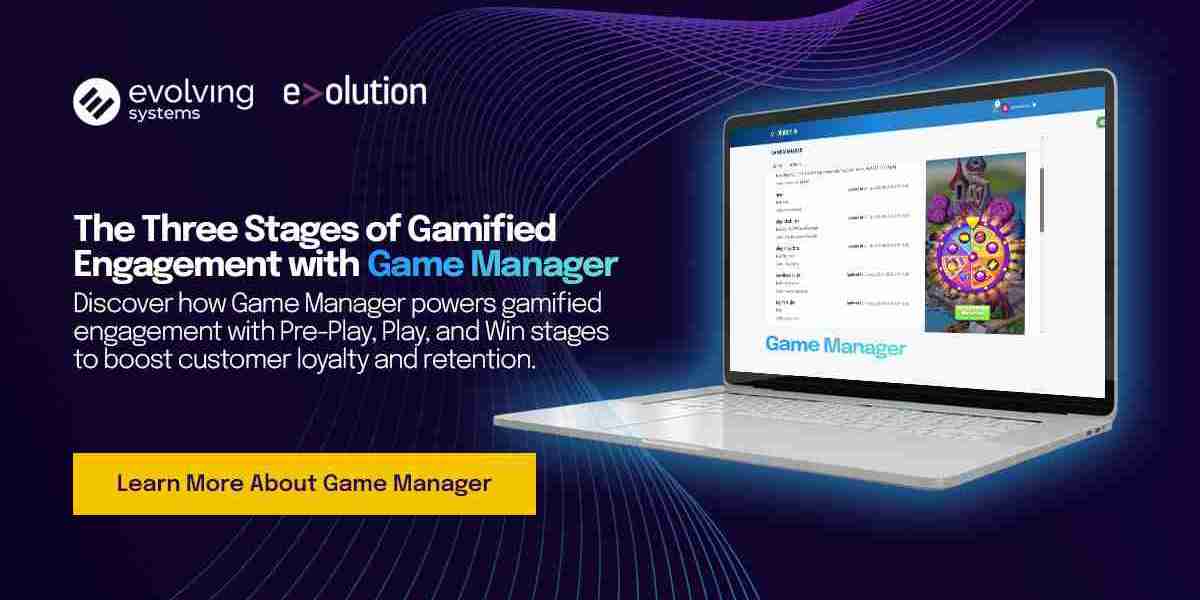Customer engagement has evolved beyond traditional marketing strategies. Today, businesses need to captivate users in interactive, rewarding, and personalized ways. Gamification—a proven approach that turns everyday interactions into exciting experiences that drive retention, loyalty, and revenue.
According to Precedence Research, the global gamification market is expected to grow from $16.29 billion in 2024 to $190.87 billion by 2034, at a CAGR of 27.9%. With such rapid growth, businesses that fail to integrate gamification into their engagement strategies risk falling behind.
Evolving Systems’ Game Manager is a cutting-edge SaaS solution enabling businesses to design, deploy, and manage gamified experiences seamlessly. Integrated with Evolution, a robust Customer Engagement Platform, Game Manager powers a three-stage gamification journey that maximizes customer participation.
In this article, we break down the three key stages of gamified engagement—Pre-play, Play, and Win—and explain how the Game Manager optimizes each phase for the best customer experience.
Pre-Play: Setting the Rules for Engagement
Before customers start playing, the Pre-Play phase determines who can participate, how often, and under what conditions. This step aligns the game mechanics with business objectives, ensuring engagement translates into meaningful outcomes—boosting purchases, increasing app usage, or rewarding loyal customers.
1. Pre-Play Entry Models in Game Manager
- Pay to Play – Customers use loyalty points, airtime, or data balances to access the game. This monetization strategy increases customer lifetime value and encourages repeat purchases.
Example: A telecom operator allows prepaid users to exchange 5 loyalty points for a spin-the-wheel game, offering the chance to win bonus data.
- Get Play-Tokens – Customers earn game tokens by performing specific actions, such as:
- Recharging their mobile balance
- Making a payment
- Purchasing a bundle or special offer
Example: A digital bank offers one free game token for every $10 spent using their app, encouraging higher transaction volumes.
- Open to All – Some gamified campaigns maximize engagement by allowing free participation at set intervals, such as once per day or once per week.
Example: A retail brand launches a holiday-themed scratch card where users win discount vouchers daily, driving repeat visits.
? Why It Matters:
The Pre-Play phase ensures that only eligible users participate while reinforcing desired behaviors—whether spending, engaging, or returning regularly.
2. Play: Creating the Interactive Game Experience
Once users gain access, they enter the Play stage, where they engage with interactive mechanics designed to keep them entertained and invested. Game Manager offers a variety of gamification elements that cater to different engagement strategies.
Game Elements in Game Manager
- Badge Collection – Users earn redeemable badges for completing actions, fostering long-term engagement.
Example: A fitness app awards a gold badge for completing 5,000 steps daily for a week, redeemable for exclusive discounts.
- Hyper-Casual Mini-Games – A library of HTML5-based mini-games can be embedded into apps, loyalty platforms, and digital wallets. Popular formats include:
- Spin-to-Win – Instant gratification increases repeat participation.
- Memory Match – Encourages brand recall.
- Target-Based Challenges – Engages users over longer sessions.
Example: A telco integrates a slot machine game where users spin daily for bonus data or premium subscriptions.
- Reveal Mechanics – Surprise-based interactions, such as “Scratch to Win,” “Shake to Reveal,” or “Tap to Open,” drive engagement.
Example: An airline gamifies check-ins by offering a digital scratch card, with flight upgrades as prizes.
? Why It Matters:
The Play stage creates excitement and builds anticipation, increasing customer dwell time and reinforcing brand affinity.
3. Win: Delivering Personalized Rewards
Winning is what makes gamification compelling. At the Win stage, Game Manager, integrated with Evolution, automates reward delivery, ensuring instant gratification and personalized experiences.
Reward Mechanisms in Game Manager
- Personalized Next Best Offers – Evolution’s AI-powered segmentation tailors prizes to individual customer behavior.
Example: A telco uses Game Manager to offer a discounted international roaming pack to frequent travelers who win a game.
- Network Reward Provisioning – Instant delivery of bonus data, minutes, and SMS bundles through Game Manager’s integration with telco networks.
Example: A mobile operator rewards customers with 100MB of free data every time they win a lucky draw in the app.
- Partner Vouchers & Coupons – Businesses can integrate with third-party brands to offer diverse rewards beyond their ecosystem.
Example: A banking app partners with a food delivery service, offering discount vouchers to users who complete a financial literacy quiz.
? Why It Matters:
The Win phase ensures the rewards are delivered instantly, securely, and in a way that maximizes business value—whether driving repeat purchases, increasing ARPU, or reducing churn.
Why Choose Game Manager for Your Gamification Strategy?
Game Manager is more than just a game engine—it’s a fully integrated engagement platform that ensures every stage of gamification is backed by intelligent automation, machine learning-driven segmentation, and scalable infrastructure.
✔ End-to-End Gamification – Covers the entire journey from Pre-Play to Play to Win.
✔ Machine Learning-Driven Personalization – Ensures rewards and experiences align with customer preferences.
✔ Scalable & Secure – Designed for multi-tenant cloud environments with enterprise-grade security.
With Game Manager, businesses can increase engagement, drive conversions, and create memorable experiences that keep customers returning.
Article source :
This article was originally published on









